I hope you enjoy this look at growing herbs in Australia. It just goes to show people love to grow herbs everywhere!
Wherever your place of residence in the expansive Aussie continent might, be chances are the soil in your garden and the temperature conditions in your home are just right for growing a lush herb garden the entire family can adore. After all, what else does a potted or a garden herb need but a little love and care, and a dash of that crisp Aussie sunshine?
Ensuring a plant-safe environment
Growing Aussie herbs for begginers requires some proper planning and preparation in order to produce the best-tasting herbs and spices. If you just wing it, chances are that the aroma, taste, and the plant itself will be of subpar quality. With that in mind, let’s take a look at some essential precautions you need to take before building a herb garden, as well as some of the best herbs you can start growing with ease.
Potential dangers
Before you start growing your perfect garden, make sure that the soil, as well as your home, is free of any hazardous elements, for your own safety as well as for the safety of the plants. This is why you should analyze the soil beforehand in order to determine the texture, composition, acidity, and level of hazardous elements.
Among the most dangerous of elements that can stifle the growth of your garden, is asbestos. A popular construction material in the 20th century, especially in Australia, many older country farm homes were built with this toxic material. This is why home asbestos testing in Sydney has become an essential part of the inspection process in Australia.
Illawarra Flame Tree
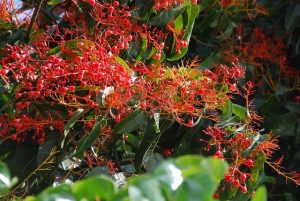
We are beginning our list with one of the most beautiful Aussie trees. The Illawarra Flame Tree is an indigenous Australian tree, native to the coastal regions of NSW and southern Queensland. In the wild, it can grow up to 35 meters, but it can also be a beautiful addition to any eco backyard or front lawns garden as it won’t surpass the 10-meter mark.
A deciduous tree boasting a striking fiery hue, the Illawarra Flame Tree sheds its fiery leaves to make way for the blossoming of beautiful, bell-shaped scarlet flowers. With this striking addition to your garden, you will also attract friendly birds and critters from the surrounding eco-system, such as the White Headed Pigeon, and numerous species of colorful butterflies.
Parsley
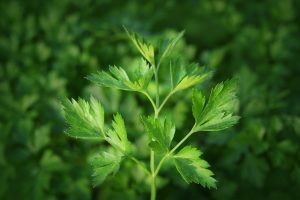
Parsley is an essential garnish in almost every dish, able to enrich the aroma and tease the taste buds with its distinctly vibrant taste and a unique hint of zest. This is a highly nutritious plant that boasts many a health benefit, along with being one of the easiest herbs to grow in your own home.
Being a biennial plant, parsley will return to your garden year after year once planted. So, how do you sow and nurture this wonderful herb? Easy, simply soak the seeds overnight and disperse thinly. Set the seedlings about 25cm apart. You can sow in mid-spring for summer harvest, or in midsummer for autumn and winter picking.
Basil
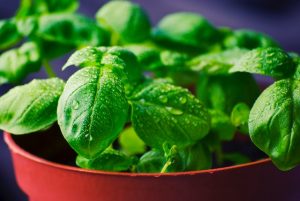
Basil is another essential herb in a garden, and this one is best grown outdoors, where sunlight and fresh air are plentiful. For an early spring sowing, it’s best to position a potted basil plant near a sunny window, after which you can transport the herb to the garden in summertime.
Thyme
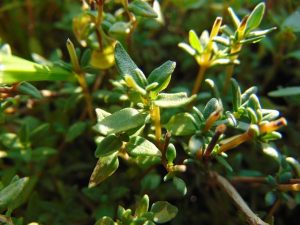
Thyme is a culinary and medicinal herb that has been used for ages by natural and holistic healers, as well as culinary experts around the world, and is a plant perfect for an outdoor garden. For perfect thyme growth, you can sow the seeds in shallow rows during mid-spring, after which you can thin out the space between established seedlings to about 15 centimeters. However, if you’re planting thyme in early spring, you want to take precaution and set up a nursery garden to avoid problems associated with cooler temperatures.
Mint
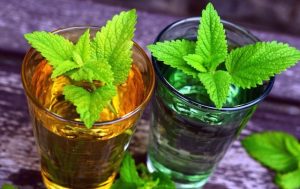
Boasting a distinctly fruity, aromatic taste and beautiful toothed leaves with white, purple, or adorably pink flowers, mint is another perennial herb your home garden should not be without. Along with being an excellent addition to many a culinary delight, mint can also be a beautiful garden accent, or a powerful air freshener in your living room.
To grow it properly, it’s maybe best you keep it as a potted plant rather than grow it in a garden, as mint is a resilient, thriving plant that tends to take over if you’re not careful. Be sure to protect the pots against cold during wintertime and avoid putting the plant under direct sunlight – but don’t keep it in the dark either.
Coriander
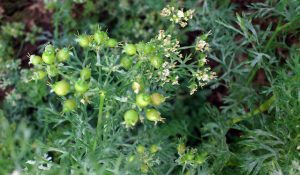
Also known as cilantro and Chinese parsley, this nutritious perennial is a must in every home garden, as you can use it to enrich the taste of any dish, choosing to sprinkle the leaves on top of a perfect veal Piccata, or use it to aromatize something as unique as avocado soup. You can sow the seeds in early spring, making sure the seeds are about six millimeters deep and that the rows are 30 centimeters apart.
Growing your very own herb garden, whether indoors or in the openness of your backyard, should be an enjoyable and rewarding experience. From their inherent health benefits to the opulent taste notes bound to deepen the flavor of your every dish, let these five herbs imbue your home with long-term health and happiness.
Short biography:
Will H. Sandford is a Sydney based writer, hobby gardener and green enthusiast. He spends the most of his time with his family whether working or having fun and exploring the nature together. “Do not judge each day by the harvest you reap but by the seeds that you plant”
Connect with him on Twitter
